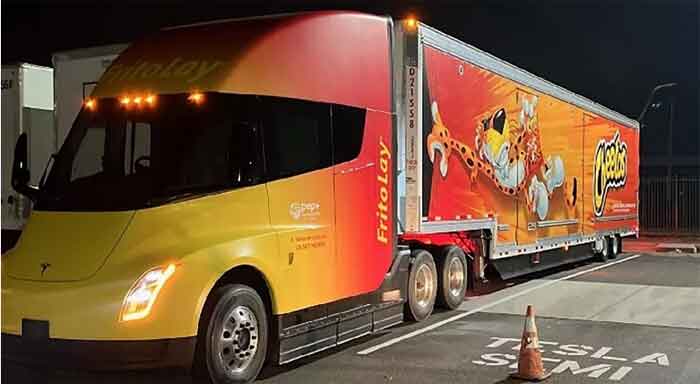| |
|
| |
|
 |
Supply
Chain by the Numbers |
| |
|
| |
- Sept. 21, 2023
|
| |
|
| |
|
| |
|
| |
Amazon Bullish on Christmas Hiring; Tesla Semi Put to the Test; Freight Tonnage Falls again in August; US Manufacturing in August Flat Again |
| |
|
| |
| |
| s |
| ac |
| |
250,000 |

|
That is how many new workers Amazon hopes to hire for this year’s Christmas season, mostly at its fulfillment and sortation centers. That according to a blog post published by Amazon earlier this week. Amazon took the opportunity to note some of these jobs offer signing bonuses between $1,000 and $3,000 in certain locations, with employees earning between $17 and $28 per hour depending on position and market. But Amazon seems to be an exception. Retailers are expected to add about 410,000 seasonal jobs this year, but that's about 100,000 less than they added last year and the lowest number since 2008, according to an estimate report by the outplacement firm Challenger, Gray & Christmas. Target says it is looking for 100,000 seasonal workers, but most are in-store positions, though some of those are involved in online order fulfillment.
|
|
|
|
| |
| |
|
|
 |
| That is how many miles a Tesla Semi electric truck owned by PepsiCo was able to travel on a single battery charge, based on data released late last week by the North American Council for Freight Efficiency’s (NACFE) Run On Less program. This represented the first independent real-world test of the Tesla Semi. This particular truck was one of three PepsiCo Teslas being test. At the end of its 377-mile journey, there was just 2% battery power left. NACFE says the etruck drove at highway speeds for about 90% of the total route, and that range was achieved with the truck loaded most of the time. One of those three trucks travelled 1600 miles in under 48 hours, requiring three full battery charges and two brief range-extending charging stops. Charging times were good or not, depending on your perspective. Tesla’s 750-kilowatt megachargers are said by the company to charge from 5% of fully charged to 80% in one hour. On day 2, it took 55 minutes for one truck in the test to charge from 18% to 80%. |
|
|
|
| |
| |
99.7 |
|
That was the level of the US manufacturing output index for August, as released last week as usual by the Federal Reserve bank. That was basically flat with the index level of 99.6 seen in July, and about the same as scores hovering around the 99 level since February, with no real growth, but not recessionary with declines either. The August score, however, was down 0.6% from the same period in 2022. At an index level of 99.7, it means US manufacturing is still below output in the baseline year of 2017 (index = 100) now almost seven years later. It is also well below the all-time high of about 108, reached in late 2007. |
| |
| |
| |
| |
| |
|
|
|
| |
 |
 |
| |
 |
![]() |
 |
|
| |
 |
Feedback |
|
|
|
![]()
|
No Feedback on this article yet.
|
|
![]() |
|
|
|
![]() |
 |
![]() |
 |
|
| |